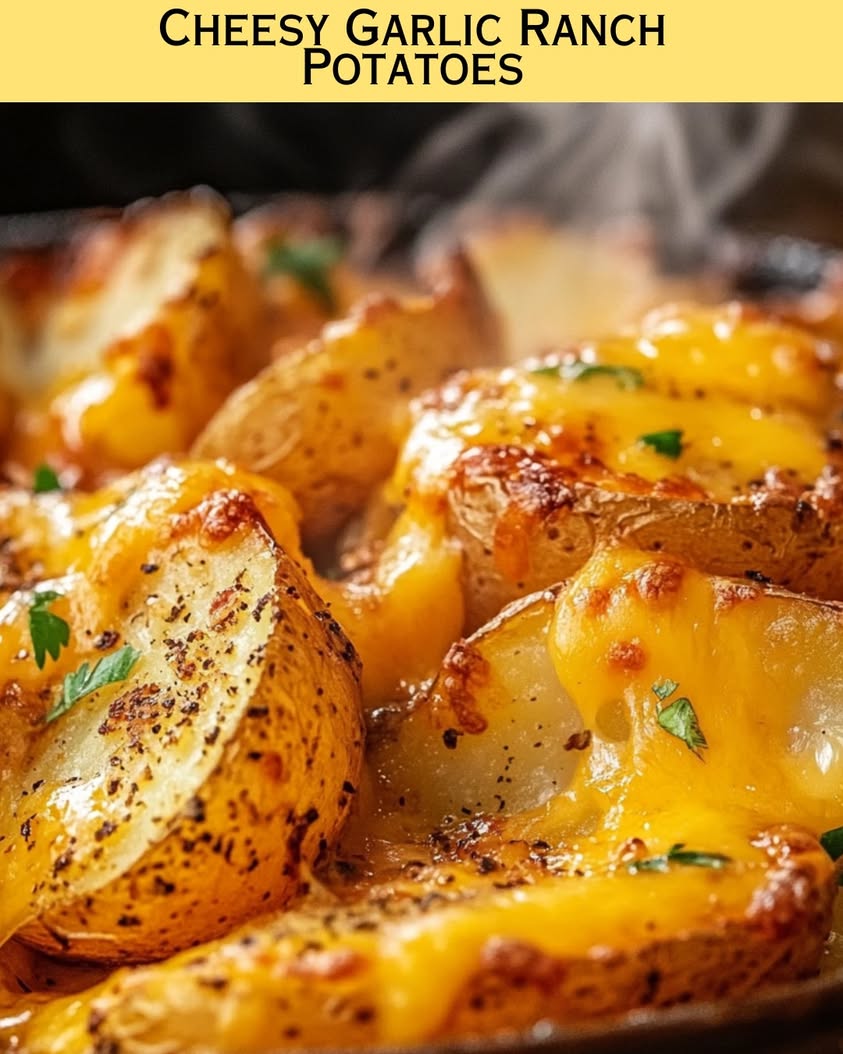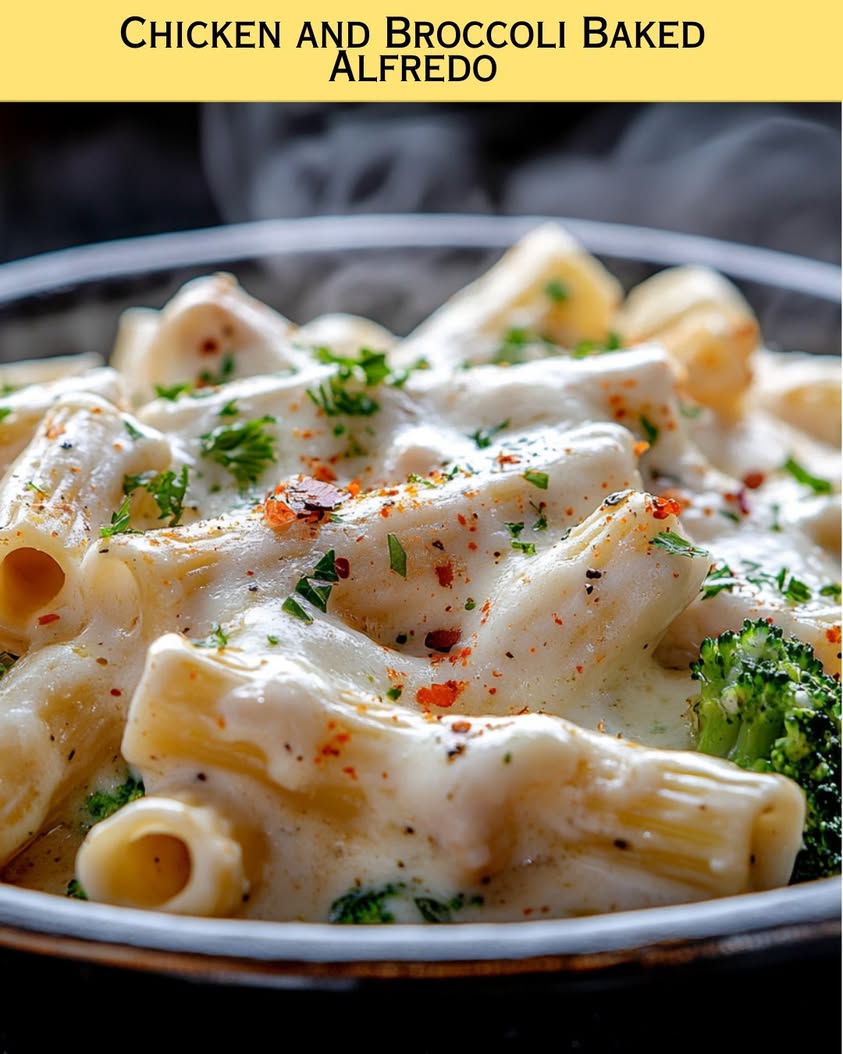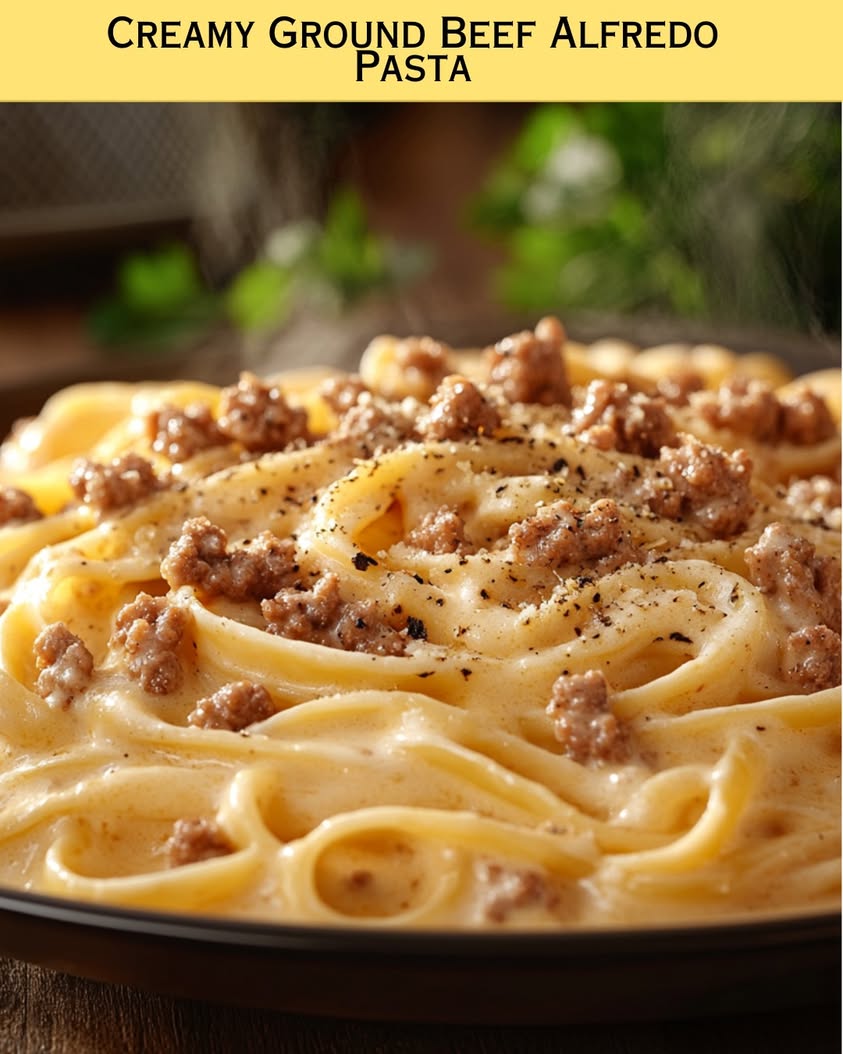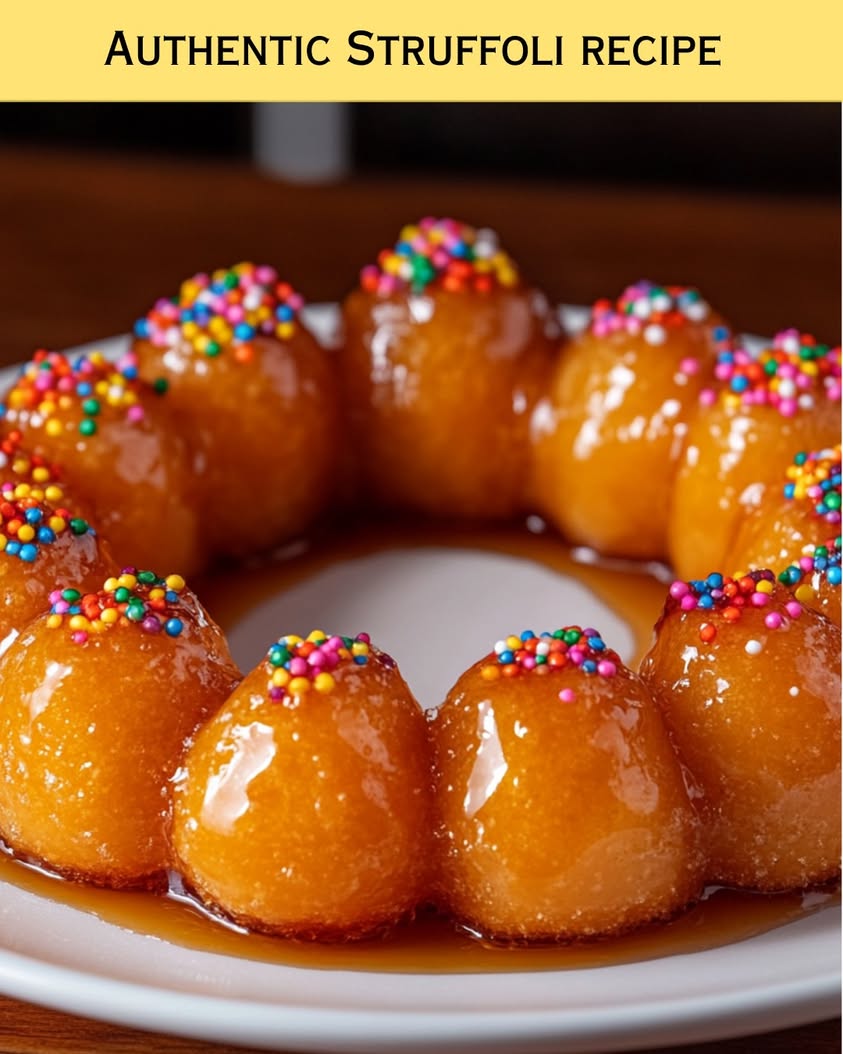Cheesy Garlic Ranch Potatoes: The Ultimate Comfort Food
Cheesy Garlic Ranch Potatoes are the perfect dish to serve at any gathering, brimming with rich flavors and delicious textures. The creamy cheese melds beautifully with the garlic and ranch seasoning, creating a mouthwatering experience that will have everyone coming back for seconds. The golden brown edges of the potatoes provide a satisfying crunch, while the tender insides offer a comforting softness—making this combination a hit for any comfort food lover.
With simple ingredients and easy preparation steps, this recipe is accessible for home cooks of any skill level. Whether you’re making them for a family dinner, potluck, or just a cozy night in, these Cheesy Garlic Ranch Potatoes are sure to please. Each bite delivers an explosion of flavor that perfectly complements any protein, side, or even a hearty salad, proving to be the ultimate side dish in culinary versatility.
Quick Recipe Highlights
- Flavor Profile: A delightful combination of creamy cheese, zesty ranch, and aromatic garlic.
- Texture: Crispy on the edges and wonderfully soft in the center.
- Aroma: A savory blend of roasted garlic and melted cheese will fill your kitchen.
- Visual Appeal: Golden brown potatoes topped with melted cheese, garnished with fresh herbs.
- Skill Level Needed: Easy; perfect for beginner cooks wanting to impress.
- Special Equipment: A large baking dish and oven are all you need.
Recipe Overview
- Difficulty Level: This recipe is straightforward, requiring minimal cooking skills. It’s perfect for busy weeknights or casual gatherings.
- Category: Cheesy Garlic Ranch Potatoes can be enjoyed as a side dish or a snack, fitting seamlessly into various mealtime categories.
- Cuisine: This dish embodies American comfort food, often found at family BBQs and holiday gatherings.
- Cost: The ingredients are budget-friendly, making this recipe easy on the wallet while achieving maximum flavor.
- Season: Ideal for any season, but especially comforting during colder months when heartwarming dishes are most appreciated.
- Occasion: Great for casual dinners, potlucks, or game nights when you want to feed a crowd with minimal effort.
Why You’ll Love This Recipe
Taste and texture appeal: Cheesy Garlic Ranch Potatoes brilliantly balance savory flavors with creamy textures. Each bite bursts with cheesy goodness, enhanced by the aromatic garlic, all while being enveloped in the comforting familiar taste of ranch seasoning. This combination appeals not only to your taste buds but also your comfort food cravings.
Convenience and preparation benefits: Preparing these cheesy potatoes is straightforward and quick. The ingredients require minimal chopping, mostly just washing and slicing potatoes, bringing this dish within reach for those who feel pressed for time but still want to create something delicious.
Nutritional advantages: Potatoes are a great source of vitamins and minerals, including potassium and vitamin C. Coupled with ranch seasoning and cheese, they create a satisfying, energy-boosting side that can be enjoyed guilt-free in moderation.
Social and entertaining value: These Cheesy Garlic Ranch Potatoes are an instant crowd-pleaser. Whether at a family gathering or a friend’s game night, serving up a big dish of these cheesy goodness promotes sharing and conversation, making them a fantastic choice for entertaining.
Cost-effectiveness and accessibility: Utilizing everyday ingredients, this recipe allows people from all walks of life to enjoy a hearty meal without breaking the bank. Accessibility in terms of both ingredients and preparation makes this a go-to recipe in any home kitchen.
Historical Background and Cultural Significance
Origin story: This delicious dish draws from classic American cooking, where the use of cheese and ranch became popular in the late 20th century as ranch dressing gained fame across the country. The combination of potatoes and ranch ingredients represents the quintessential comfort food cherished by families across the nation.
Cultural importance: As a staple side, Cheesy Garlic Ranch Potatoes often appear on tables during gatherings, underscoring the communal aspect of American dining. They evoke memories of potlucks and family holidays, making them more than just a dish, but a part of shared experiences.
Evolution of the recipe: Over time, various adaptations have emerged, with cooks adding their unique spin—be it extra spices, different cheese types, or garnishes—allowing each family to claim the dish as their own. This flexibility has contributed to its enduring popularity.
Regional variations: As the recipe travels through different parts of the United States, influences from local ingredients and flavors have shaped distinct regional versions. For example, adding local herbs or spices can enhance the recipe, giving it a hint of local flair.
Ingredient Deep Dive
Potatoes: Potatoes have been a dietary staple for centuries, offering both versatility and nutrition. Rich in carbohydrates, they serve as a significant energy source. When selecting potatoes, look for firm, blemish-free examples for the best flavor and texture. Store them in a cool, dark place for longevity, and if you’re looking for substitutes, sweet potatoes can also work beautifully in this recipe.
Cheese: The choice of cheese significantly impacts the overall dish flavor. Cheddar is a popular choice for its meltiness and sharpness. Cheese adds creaminess and rich flavor, but it also contributes calcium and protein. When selecting cheese, aim for high-quality options, and consider using low-fat varieties if you’re health-conscious. Leftover cheese should be stored in an airtight container in the fridge.
Garlic: Garlic is a potent flavor enhancer with a long history of culinary use. Packed with antioxidants, it offers potential health benefits, including boosting the immune system. Fresh garlic should be selected based on firmness and lack of sprouting. Store it in a cool, dark place, and for substitutions, garlic powder can be used in a pinch, though the flavor will differ.
Ranch seasoning: Job’s ranch seasoning adds an unmistakable flavor profile, combining herbs and spices. Often associated with savory delights, its creamy element enhances various recipes. When purchasing seasoning, opt for organic options when possible for fewer preservatives. To store, keep it in a cool, dry place. If you need alternatives, a mix of sour cream and fresh herbs can replicate its taste.
Common Mistakes to Avoid
- Not cutting potatoes evenly: To ensure even cooking, cut your potatoes into similarly sized pieces. Uneven cuts will yield uneven cooking times, resulting in some being undercooked while others are overcooked.
- Skimping on cheese: Don’t be shy with the cheese; it’s meant to be the star of this dish. Insufficient cheese can lead to less flavor and creaminess.
- Overcooking: Keep an eye on the potatoes while they bake. Overcooked potatoes can become mushy, losing their desired texture. Aim for a crisp exterior and tender interior.
- Ignoring seasonings: Ensure you evenly mix the ranch seasoning because uneven distribution can lead to bland bites.
- Using stale garlic: Using old or sprouted garlic can diminish the flavor of your dish, so always choose fresh garlic for the best taste.
- Skipping the preheating stage: Preheat your oven to ensure even cooking. Starting with a hot oven allows for that ideal crispy texture.
- Improper storage: Leftovers should be cooled down before storage to prevent sogginess. Ensure they are kept in an airtight container in the fridge.
- Not tasting before serving: Always taste the dish before serving to adjust seasonings accordingly. You might find it needs a little extra salt or spice to enhance the flavors.
- Skipping proper washing: Potatoes should be thoroughly washed to remove any dirt or residual pesticides before cooking.
- Overloading the baking dish: If the dish is too crowded, the potatoes will steam rather than roast, leading to a less desirable texture.
Essential Techniques
Roasting: Roasting is essential for developing the potato’s natural sweetness while achieving a rich, golden color. Preheat your oven and distribute the potatoes evenly on the baking sheet, allowing air to circulate. Look for visual cues, such as browning to assess doneness.
Mixing cheeses: Mastering the cheese blend can elevate the flavor. Combining the textures and tastes of various cheeses can create the desired creaminess and depth of flavor. Mix your cheeses well before adding to the dish to ensure even distribution.
Seasoning adjustment: Learning how to adjust the seasoning is crucial for enhancing flavor. Tasting throughout the cooking process allows you to fine-tune flavors. A pinch of salt can significantly elevate the taste, so don’t hesitate to adjust parent to your palate.
Slow cooking: Slow cooking the potatoes initially can enhance their flavor and texture. Begin with medium heat and gradually advance to high heat towards the end for a beautifully crispy result. Watch for visual cues like a golden crust for signifying the stage to finish cooking.
Pro Tips for Perfect Cheesy Garlic Ranch Potatoes
– Use a mix of cheese varieties like Monterey Jack and cheddar for added flavor complexity in your Cheesy Garlic Ranch Potatoes.
– For an extra kick, add a pinch of cayenne pepper or paprika to the ranch seasoning for a bit of heat.
– Let the potatoes sit for a few minutes after baking to set before serving for optimal texture.
– Garnish with freshly chopped parsley or chives before serving for an additional pop of color and flavor.
– For a creamier texture, consider drizzling a bit of sour cream on top before serving.
– Ensure potatoes are dry before seasoning to help the ranch seasoning adhere better.
– Use a high-quality ranch seasoning for best results; making your own can add a personal touch.
– To cater to various dietary needs, consider using dairy-free cheese and a homemade dairy-free ranch mix.
Variations and Adaptations
Regional variations: Cheesy Garlic Ranch Potatoes can be tailored to fit regional flavor profiles by incorporating spices like Old Bay for a coastal twist or BBQ seasoning for a southern touch.
Seasonal adaptations: During the fall, consider incorporating roasted pumpkin cubes for added sweetness, creating a delightful contrast to the salty cheese.
Dietary modifications: For those avoiding gluten, ensure all spices and sauces used are certified gluten-free. Additionally, explore replacing regular cheese with plant-based options for a vegan dish.
Flavor variations: Adding sautéed onions or bell peppers before baking can introduce new flavors and textures to the dish, making it even more satisfying.
Texture modifications: Consider parboiling the potatoes briefly before seasoning for a softer interior while maintaining a crispy exterior when roasted.
Presentation alternatives: Serve your potatoes in individual ramekins for a unique presentation, making them more appealing for dinner parties or family gatherings.
Serving and Presentation Guide
Plating techniques: To showcase the Cheesy Garlic Ranch Potatoes, arrange them slightly overlapping on a large serving platter. This encourages sharing and makes for an inviting presentation.
Garnishing ideas: Fresh herbs like parsley or cilantro will add color and freshness to the dish. For a pop of extra flavor, consider sprinkling a touch of crispy bacon bits on top.
Traditional accompaniments: These potatoes pair beautifully with grilled chicken, steak, or a fresh garden salad, balancing flavors and textures well.
Modern serving suggestions: Serve in small bowls with individual portions for a trendy twist that guests can enjoy with dips like ranch or spicy ketchup.
Temperature considerations: Cheesy Garlic Ranch Potatoes are best served warm, allowing the cheese to maintain its luxurious consistency. Avoid serving them cold, as they can lose their appeal.
Portion control tips: For parties, serve single-sized portions to maintain control over servings and ensure guests can easily take their desired amount without wasting food.
Wine and Beverage Pairing
Wine pairings: Pair your Cheesy Garlic Ranch Potatoes with a chilled Chardonnay, which complements the creamy textures beautifully, or a Sauvignon Blanc, which adds a refreshing contrast.
Non-alcoholic alternatives: Iced tea or lemonade are excellent choices that provide a refreshing balance to the richness of the dish without overpowering the flavors.
Coffee/tea pairings: A lightly roasted coffee can accentuate the rich flavors of the potatoes, while a mild herbal tea serves an aromatic counterpoint.
Temperature considerations: Ensure your drinks complement the dish’s temperature. A cold wine or iced beverage pairs well with the warmth of the potatoes for a pleasant contrast.
Serving suggestions: Present wines in chilled glasses beside the dish for an elegant touch, encouraging a delightful dining experience.
Storage and Shelf Life
Storage methods: Place leftover Cheesy Garlic Ranch Potatoes in a sealed container to keep them fresh. Proper storage helps retain their flavor and texture for up to three days in the refrigerator.
Temperature requirements: Best consumed within two to three days, store them in a cool area. Ensure they are brought back to room temperature before reheating for optimal taste.
Container recommendations: Use airtight glass or plastic containers to prevent moisture and odors from reaching your leftovers, preserving their quality and taste.
Signs of spoilage: Look for any off-smell or change in texture that may signal spoilage. If the potatoes appear mushy or have developed a pungent odor, it’s best to discard.
Reheating instructions: Reheat in the oven to regain that crispy texture, utilizing a low temperature to warm them gently without drying out.
Freezing guidelines: Although the best flavor is enjoyed fresh, you can freeze leftovers by placing them in a freezer-safe container. They can last for about a month but may lose texture when thawed.
Make Ahead Strategies
Prep timeline: Prepare the Cheesy Garlic Ranch Potatoes several days in advance by chopping and storing them properly. A little forward planning can save valuable time on busy days.
Storage between steps: Store cut potatoes in water in the fridge to prevent browning. This method allows for quick assembly when ready to bake.
Quality impact assessment: Doing some prep ahead of time preserves the quality of your ingredients while ensuring that you can easily assemble the dish when cooking time arrives.
Assembly tips: Assemble the dish just before you’re ready to bake. You can prepare the cheese mix in advance and store it, making it easier to layer quickly right before cooking.
Reheating guidelines: If you choose to prepare ahead, reheat thoroughly before serving to achieve that warm, melted-cheese perfection.
Fresh element additions: For a bright finish, toss in some fresh herbs or a drizzle of lemon juice just before serving to elevate the dish further.
Scaling Instructions
Halving the recipe: To scale down the recipe, simply divide the ingredients in half, ensuring you reduce the quantity of cheese and seasoning to maintain flavor.
Doubling or tripling: When multiplying the recipe, consider using multiple baking sheets to avoid overcrowding, which can impact the cooking time and texture.
Equipment adjustments: Depending on the amount, make sure you have enough pans and appliances to accommodate the increased volume. Oven space should also be taken into account.
Timing modifications: Increasing the amount may necessitate longer cooking times; always keep an eye on the potatoes and check for desired crispness and doneness.
Storage considerations: Larger batches can be stored in multiple containers to prolong freshness, as they can spoil faster when packed tightly together.
Nutritional Deep Dive
Macro breakdown: Each serving of Cheesy Garlic Ranch Potatoes contains a balanced mix of carbohydrates from potatoes, fats from cheese, and protein. Be mindful of portion sizes to maintain a balanced diet.
Micronutrient analysis: Potatoes are a source of potassium and vitamin C, while cheese provides calcium and other essential nutrients. This dish can offer a wealth of vitamins and minerals when enjoyed appropriately.
Health benefits: The combination of antioxidants from garlic and fiber from potatoes can contribute positively to overall health. Enjoying these in moderation can fit into a healthy lifestyle.
Dietary considerations: While comfort food, keep portion sizes in mind, especially if watching caloric intake. Pairing with a protein can create a well-rounded meal without excessive carbs.
Portion analysis: Determining appropriate serving sizes can help manage calorie intake, especially in servings that may easily lead to excesses.
Weight management tips: Balancing indulgent meals like Cheesy Garlic Ranch Potatoes with active choices, such as adding a salad, can help maintain a healthy lifestyle.
Dietary Adaptations
Gluten-free: For a gluten-free version, ensure all seasonings and ranch mix are certified gluten-free. This will allow those with sensitivities to enjoy the dish worry-free.
Dairy-free: To create a dairy-free variant, replace traditional cheese with plant-based cheese alternatives. Nutritional yeast can provide cheesy flavor without dairy.
Vegan: Making this dish vegan-friendly is easy by substituting dairy cheese and ensuring the ranch mix is free of animal products, allowing everybody to indulge.
Low-carb: For a low-carb alternative, consider using cauliflower instead of potatoes. This swap can maintain the dish’s creamy essence while reducing carbs significantly.
Keto: Use keto-friendly ranch ingredients and cheese with minimal carbohydrates to create a suitable dish for those following this low-carb lifestyle.
Paleo: By avoiding processed ingredients like ranch off the shelf, you can make this dish suitable for the paleo diet by using fresh herbs as a replacement for ranch dressing.
Low-FODMAP: Adapting this dish for a low-FODMAP diet may include using green onions instead of regular onions. Look for appropriate potato portions for sensitive digestive systems.
Other specific diets: Consider substituting ingredients based on individual dietary restrictions to expand this dish’s accessibility, making it a family favorite regardless of preferences.
Troubleshooting Guide
Texture issues: If the potatoes turn out too mushy, reduce the cooking time or increase heat towards the end to achieve a better texture and prevent them from overcooking.
Flavor balance: If the ranch flavor seems overwhelmed, try adjusting the cheese levels or adding more seasoning gradually until achieving balance in taste.
Temperature problems: Ensure your oven is accurately calibrated and preheated. Uneven heating can cause some parts to undercook or overcook.
Equipment challenges: If you find your baking dish is overcrowded, consider using two separate pans or adjusting the oven temperature to ensure even cooking.
Ingredient substitutions: When substituting ingredients like ranch or cheese, consider the balance of flavors to maintain the original dish’s essence.
Timing concerns: If you’re in a rush, parboiling the potatoes can give them a head start and reduce the overall baking time for convenience without sacrificing quality.
Recipe Success Stories
Community feedback: Cheesy Garlic Ranch Potatoes have garnered rave reviews for their flavor and ease of preparation from home cooks who often share their experiences online.
Variation successes: Many have found joy in creating their versions—adding bacon or different cheeses has turned this simple dish into a family favorite across generations.
Adaptation stories: Readers report successfully tweaking the recipe to fit dietary restrictions, sharing their adaptations that still deliver delicious results.
Reader suggestions: Community members have suggested various seasoning combinations, elevating this dish in creative and exciting ways, expanding its culinary horizons.
Photography tips: Many home cooks enjoy capturing their foodie moments, sharing beautifully plated versions of Cheesy Garlic Ranch Potatoes on social media, encouraging others to try it.
Frequently Asked Questions
Can I prepare these potatoes in advance?
Yes, you can prep the potatoes and store them in an airtight container in the refrigerator for up to 24 hours before baking. Just ensure they are tossed in the ranch seasoning to enhance the flavors.
What can I substitute for ranch seasoning?
If you don’t have ranch seasoning, you can create a homemade blend with dried dill, garlic powder, onion powder, and salt. This mixture can replicate the flavor quite well.
How long will leftovers last?
Leftover Cheesy Garlic Ranch Potatoes can be stored in the refrigerator for 2-3 days. Make sure to keep them in an airtight container to maintain freshness.
Can I freeze Cheesy Garlic Ranch Potatoes?
Yes, they can be frozen. Allow them to cool, then store them in freezer-safe containers. They should maintain their quality for up to one month when frozen properly.
What type of cheese works best?
Cheddar is a traditional choice, but you can blend it with mozzarella for extra gooeyness or pepper jack for a little heat. Choose cheese according to your taste preferences.
Are these potatoes suitable for meal prep?
Absolutely! These potatoes are perfect for meal prep. Cook a large batch and portion them for the week. They pair well with various proteins and salads.
What if I want to reduce calorie content?
To reduce calorie content, consider using a lighter cheese option or reducing the amount of cheese used. You could also add more vegetables to increase bulk without significantly raising calories.
What are some great side dishes for these potatoes?
Pair Cheesy Garlic Ranch Potatoes with grilled meats, fresh salads, or steamed vegetables for a balanced meal. They work well as a side for steak, chicken, or fish.
Can I make these potatoes in an air fryer?
Yes! Air-frying is an excellent method for cooking these potatoes. Pre-cook them slightly before tossing them with seasoning, then air fry until crispy.
What is the best way to reheat leftovers?
The best way to reheat leftovers is in the oven at a low temperature to avoid drying them out, allowing the cheese to become melty again while the potatoes warm up properly.
Additional Resources
For those looking to enhance their culinary skills, explore related recipes such as loaded baked potatoes or creamy potato casseroles. Consider checking out guides that delve deeper into techniques like roasting and selecting the best ingredients for maximum flavor. Additionally, if you’re interested in expanding beyond this recipe, browse equipment recommendations that can elevate your kitchen game, from versatile baking dishes to efficient kitchen tools. Seasonal variations will help you find fresh components to integrate throughout the year.
Join the Conversation
We love hearing from our readers! Share your experience with Cheesy Garlic Ranch Potatoes on social media and show us your delicious creations. Use our hashtag to be part of the community, and don’t hesitate to provide photography tips or your unique variations. Engage with fellow food enthusiasts in the comments section and discuss potential adaptations and share your favorite sides that pair well with this comforting dish—your culinary journey awaits!
The Recipe
Cheesy Garlic Ranch Potatoes
Serves: 4
Prep Time: 15 mins
Cook Time: 30 mins
Total Time: 45 mins
Kitchen Equipment Needed
- Large baking dish
- Mixing bowl
- Knife
- Cutting board
- Spoon or spatula for mixing
Ingredients
- 4 medium-sized potatoes, washed and cut into cubes
- 1 cup shredded cheddar cheese
- 1/2 cup ranch dressing
- 2 cloves garlic, minced
- Salt and pepper to taste
- Optional: chopped green onions or fresh parsley for garnish
Directions
- Preheat the oven to 400°F (200°C).
- In a mixing bowl, combine the cubed potatoes with the minced garlic, ranch dressing, salt, and pepper.
- Toss the potatoes until fully coated and spread them evenly in a large baking dish.
- Bake in the preheated oven for 25 minutes or until the potatoes are tender.
- Remove from the oven and sprinkle shredded cheese on top. Return to the oven for an additional 5-7 minutes, or until the cheese is melted and bubbly.
- Once baked, garnish with chopped green onions or parsley, if desired. Serve warm and enjoy your delicious Cheesy Garlic Ranch Potatoes!
Recipe Notes
- You can substitute skin-on potatoes for extra nutrients and flavor.
- Consider adding diced bell peppers or cooked bacon for additional flavor.
- This dish can be made in advance and reheats well.
- For a richer flavor, experiment with different cheese varieties or ranch blends.




